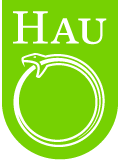Bilingual language learning and the translation of worlds in the New Guinea Highlands and beyond
Abstract
This article deals with two kinds of translation among Ku Waru people in the New Guinea Highlands: (1) translation between the local language and the national lingua franca within everyday interactions between young children and their caregivers; (2) intercultural translation between the story world of a local genre of sung tales and the contemporary lived world of Highland Papua New Guineaas practiced by skilled composer-performers of the genre. Although these two kinds of translation take place on very different planes, they both operate in terms of a well-developed set of procedures establishing equivalence, between words and worlds, respectively. On both planes a key role is played by parallelism, suggesting a connection between equivalence in the ordinary sense of the word and in the specific sense of it that was developed by Roman Jakobson—a connection which is significant for the understanding of translation in general.
DOI: https://doi.org/10.14318/hau4.2.006


